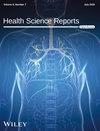Study Protocol for Applying Trend Impact Analysis in Health Futures Studies: A Methodological Approach Illustrated by HIV/AIDS Forecasting in Iran
Abstract
Background
Future planning is critical in the health sector. Data-driven strategies, such as forecasting, assume that past influential forces will persist under similar conditions. Acknowledging significant events and examining their effects can enhance understanding of potential consequences, improving health system planning. This study elucidates the trend impact analysis (TIA) protocol for forecasting and scenario planning in health systems, focusing on the future of HIV/AIDS in Iran.
Methods
We utilized the TIA approach, which effectively combines quantitative and qualitative methodologies to enhance the precision of forecasting. TIA is specifically designed to account for the influence of unforeseen events and their potential future occurrences on existing trends, thereby facilitating more reliable and comprehensive projections. The methodology uses historical data to extrapolate and forecast future trends quantitatively. Concurrently, qualitative tools identify potential disruptive or influential events that may impact these trends. The approach generates two principal indices: the Impact Rate, which evaluates both the probability of an event's occurrence and the intensity of its effects on existing trends, and the Corrected Estimate Value, which integrates the Impact Rate with the baseline values based on quantitative forecasting. Researchers incorporate events' impacts into the trend projections by systematically analyzing their nature and magnitude. These methodological steps collectively contribute to formulating well-informed and plausible future scenarios.
Conclusions
The limitations in forecasting the future using quantitative methods and ignoring the effects of unexpected events can lead to “surprises-free” predictions and cause deviations from estimates and plans. To address this, using innovative approaches in the methodology of studies is crucial. It provides the groundwork for intelligent planning to face the future, ensuring the health field remains dynamic and responsive to change and fostering an optimistic outlook.


 求助内容:
求助内容: 应助结果提醒方式:
应助结果提醒方式:


